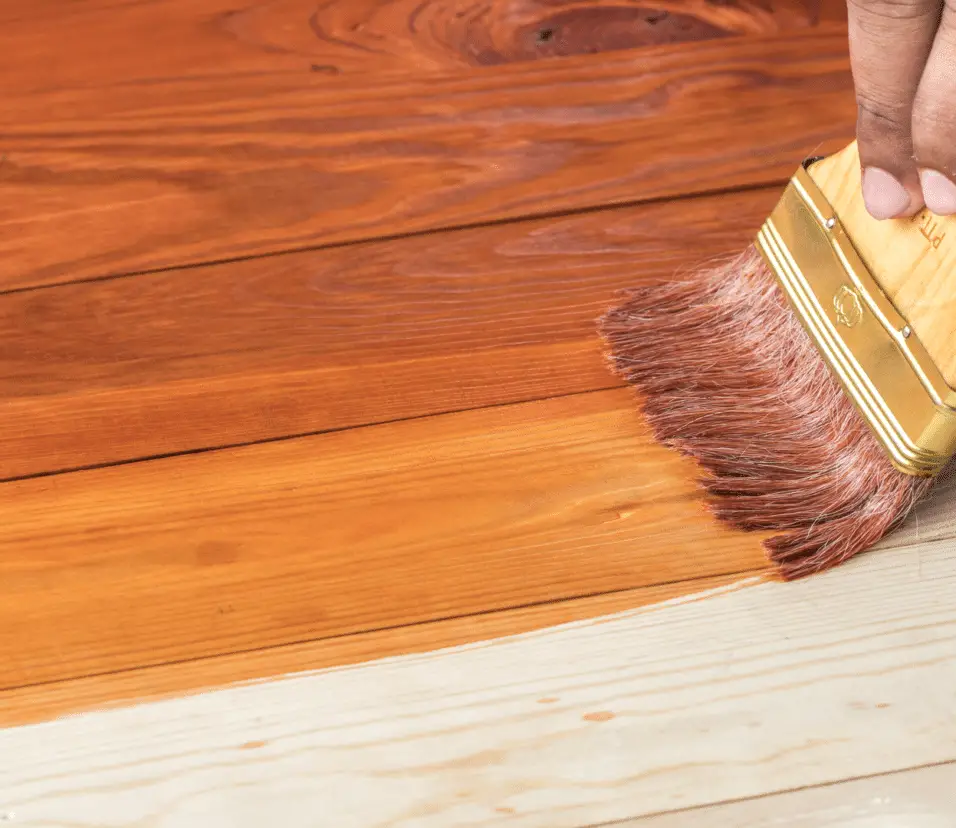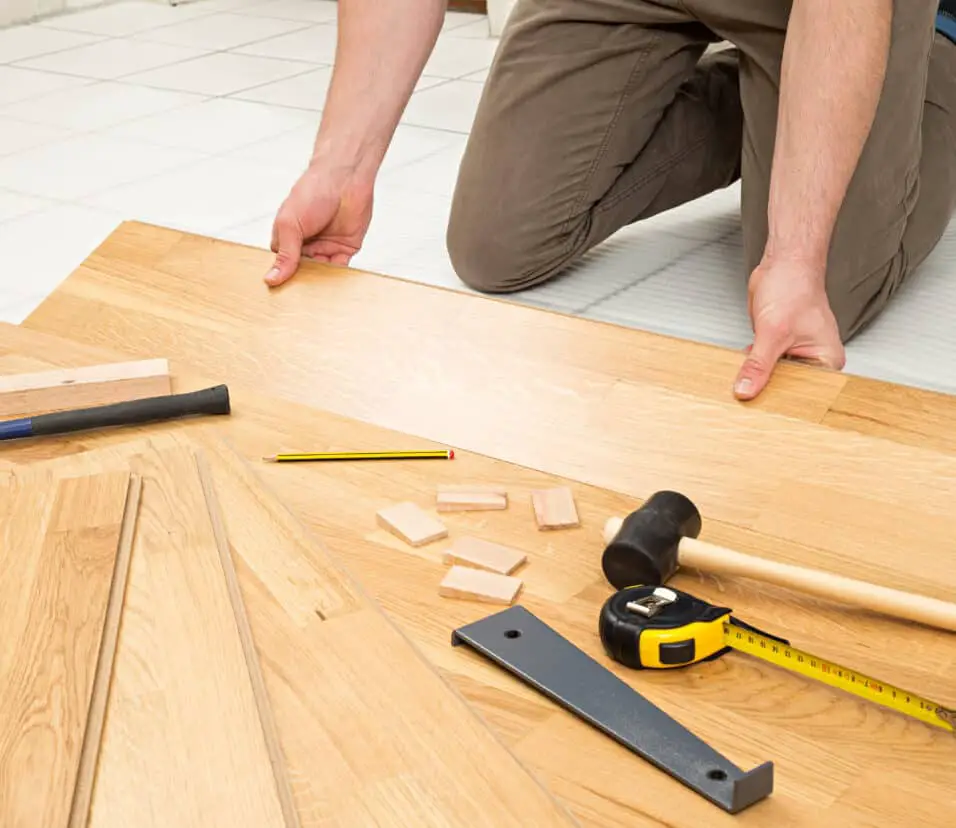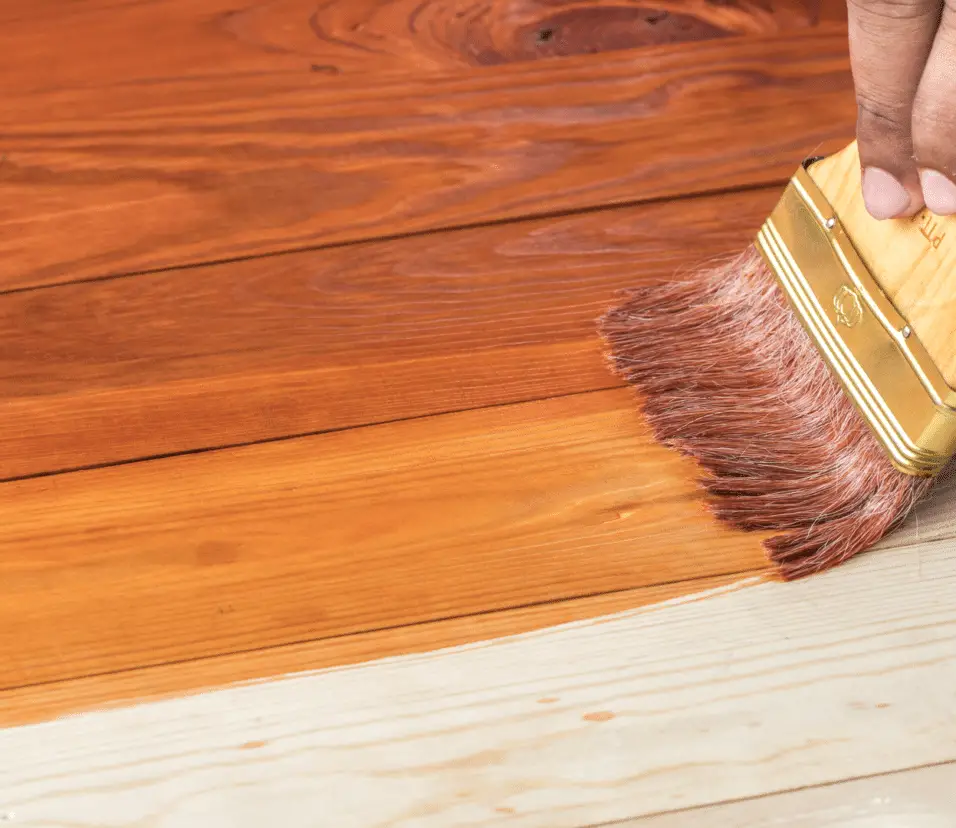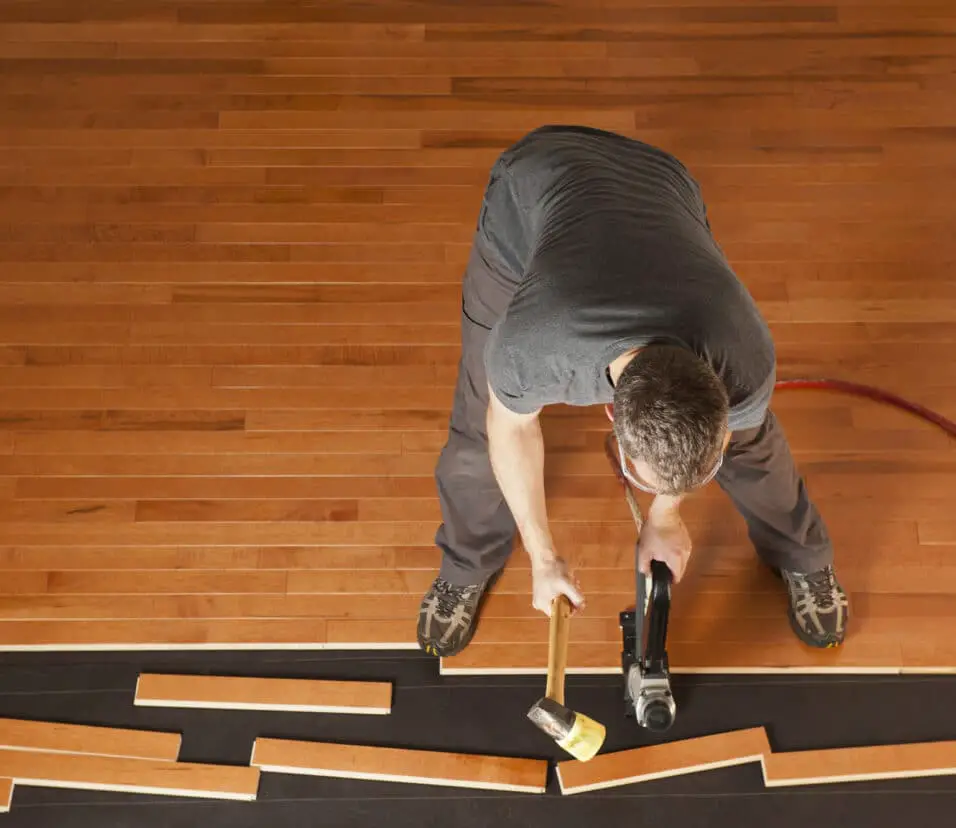How To Fill Gaps In Wood Floors
Introduction
How To Fill Gaps In Wood Floors: Wooden floors add timeless charm and warmth to any living space, but over time, they may develop gaps due to various factors like changes in humidity, temperature, or improper installation. These gaps can not only be unsightly but also cause drafts, trap dirt and debris, and even pose a tripping hazard. Fortunately, with the right techniques and materials, you can effectively fill these gaps, restoring the beauty and functionality of your wood floors.
One of the key factors contributing to gaps in wood floors is the natural expansion and contraction of the wood with fluctuations in humidity and temperature. During dry seasons, the wood loses moisture, causing it to shrink, while in humid conditions, the wood absorbs moisture and expands. This movement can lead to small gaps appearing between the floorboards. Additionally, as wood floors age or experience heavy foot traffic, the constant wear can gradually widen these gaps, requiring attention and maintenance.
Before delving into the gap-filling process, it’s essential to determine whether the gaps in your wood floors warrant filling. Small gaps, usually less than 1/8 inch wide, are relatively common and often considered normal, as they are a result of the wood’s natural behavior. However, if the gaps are wider, causing noticeable drafts or collecting debris, or if they pose a tripping hazard, it is crucial to address them.

What is the best gap filler for floor boards?
Over time, regular wood fills can crack and fall out of the gaps. We suggest that you use either Bona Gap Master or Osmo Interior Gap Sealer. Before you sand and finish the floor, both fillers are great for closing the gaps between the boards.
Your floor boards’ type and the size of the gaps will determine which gap filler works best for you.
Wood putty or epoxy-based fills work great for small gaps, usually less than 1/8 inch wide. Wood putty is made up of small pieces of wood and glues that hold them together. It is easy to work with and looks natural when matched to the color of the floor. It works great for covering up small flaws and gaps, leaving a surface that is smooth and even after application. On the other hand, epoxy-based fillers are stronger and can handle a lot of foot traffic.
They work best on older wood floors that have bigger gaps because of wear and tear and natural movement. You can make a custom filler that matches the color of your existing wood floor with this process.
What Is The Best Wood Filler For Hardwood Floors?
Best Wood Filler for Hardwood Floors
- Minwax Stainable Wood Filler – Best Overall.
- Timbermate Wood Filler.
- Famowood Wood Filler – Best Colored Wood Filler.
- Goodfilla Wood Filler.
- Abatron WoodEpox Epoxy Wood Replacement Compound – Most Durable.
- Donald Durhams Rockhard Water Putty – Best Wood Putty.
When it comes to filling gaps, holes, or imperfections in hardwood floors, choosing the best wood filler is crucial to achieving a flawless and long-lasting result. Several factors should be considered when selecting the right wood filler for hardwood floors, including the size of the gaps, the type of wood, the finish you desire, and the level of durability required.
For small to medium-sized gaps in hardwood floors, latex-based wood fillers are often a popular choice. These fillers are easy to apply, quick-drying, and can be sanded and stained to match the surrounding wood, providing a seamless finish. Latex-based wood fillers are also flexible, which is essential as hardwood floors naturally expand and contract with changes in humidity.
For more extensive gaps or in high-traffic areas, epoxy-based wood fillers are a top contender. Epoxy fillers are incredibly durable, capable of withstanding heavy use and impact. They bond strongly with hardwood, ensuring a long-lasting and stable repair. Epoxy fillers also come in various colors, making it easier to find a shade that closely matches the hardwood floor’s natural color.
For hardwood floors that have larger gaps and a more rustic appearance, rope-like fillers made from natural fibers can be an excellent choice. These flexible and pliable fillers can be pressed into wider gaps, giving the floor a charming, authentic look. They work particularly well in older hardwood floors, where gaps have naturally widened over time due to environmental factors and aging.
Should wood floor gaps be filled?
Large gaps in wood floors that do not close up during the summer months could be a result of excessive moisture (check the crawl space below), being located too close to a heating vent, incorrect nail spacing, or structural settlement issues. For normal gaps, no repairs are needed.
Filling wood floor gaps is generally recommended and can offer both practical and aesthetic benefits. While small gaps in wood floors are considered normal due to the natural expansion and contraction of the wood with changes in humidity and temperature, larger gaps can cause various issues that make filling them a wise decision.
One of the primary reasons for filling wood floor gaps is to improve the floor’s appearance. Wide gaps can be unsightly and disrupt the overall aesthetic of the room, especially in areas with high visibility. Filling the gaps can create a smoother and more visually appealing surface, enhancing the beauty of the hardwood floor.
Another essential reason to fill gaps is to prevent debris and dirt from accumulating within them. Large gaps can act as traps for dust, dirt, and even food particles, making cleaning more challenging and potentially leading to hygiene issues. Filling the gaps prevents the accumulation of debris and keeps the floor cleaner and easier to maintain.
Why fill gaps in floorboards?
Filling gaps does stop draughts and prevents the build up of dust between the gaps. Several compelling reasons make gap filling a necessary task to ensure the longevity and functionality of the floor.
Firstly, filling gaps in floorboards improves the floor’s appearance and creates a polished, seamless look. Gaps, especially wider ones, can be unsightly and disrupt the visual appeal of the room. By filling the gaps, the floor achieves a smooth and cohesive surface, enhancing the overall aesthetics of the space.
Secondly, filled gaps prevent the accumulation of dust, dirt, and debris within the floorboards. Over time, gaps can trap particles, making it challenging to clean and potentially leading to hygiene issues. Filling the gaps prevents the buildup of debris, promoting a cleaner and more hygienic environment.
Additionally, gap filling contributes to improved energy efficiency in the home. Gaps in floorboards can create drafts, allowing cold air to seep into the room during colder months. As a result, the indoor temperature becomes inconsistent, leading to energy wastage and higher heating costs. By filling the gaps, the floor’s insulation improves, reducing drafts and helping maintain a more comfortable and energy-efficient living space.
Does wood filler get hard?
Wood filler is sandable. You can paint or stain wood filler. It hardens as it cures. It dries quickly.
Wood filler does get hard.This flexibility is essential for filling gaps and ensuring a seamless finish.
However, once the wood filler is exposed to air and allowed to dry, it undergoes a chemical reaction that causes it to harden and solidify. The drying process can vary depending on the type of wood filler and environmental conditions, but it typically takes a few hours to a day for the filler to fully harden. During this time, the filler loses moisture, and the binders in the mixture create a sturdy, durable, and rigid material.
Once the wood filler is fully hardened, it becomes a stable and reliable material that blends seamlessly with the surrounding wood surface. It is crucial to allow sufficient drying time before sanding or applying any finishes to ensure the best results. Fully dried and hardened wood filler can be sanded, stained, painted, or sealed just like the rest of the wood surface, making it virtually indistinguishable from the original wood when properly applied and finished.

How do you fill gaps in wooden floor boards?
Filling the gaps with strips of solid wood is considered to be the most effective and reliable method for filling wood flooring gaps. This method is frequently used on softwood or pine floorboards and we regularly use reclaimed pine strips to fill such gaps.
Filling gaps in wooden floorboards is a straightforward process that can be accomplished using various methods and materials. Here’s a step-by-step guide on how to fill gaps in wooden floorboards effectively:
Prepare the area:
Before beginning the gap-filling process, thoroughly clean the floorboards to remove any dust, dirt, or debris. Use a vacuum cleaner or a soft brush to ensure the surface is clean and ready for the filler.
Choose the right filler:
Select an appropriate filler based on the size of the gaps and the type of wood flooring. For small gaps (less than 1/8 inch wide), wood putty or epoxy-based fillers are suitable options. For wider gaps, rope-like fillers made from natural fibers can be used for a more seamless appearance.
Apply the filler:
Using a putty knife or a spatula, apply the chosen filler into the gaps. Press the filler firmly into the gaps to ensure a complete and solid fill. For larger gaps, you may need to pack the rope-like filler more tightly.
Remove excess filler:
Once the gaps are filled, use the putty knife to scrape off any excess filler from the surface of the floorboards. This step helps achieve a smoother and more even finish.
Allow drying time:
Let the filler dry as per the manufacturer’s instructions. Drying times can vary depending on the type of filler used and environmental conditions. It’s crucial to wait until the filler is fully dry and hardened before proceeding.
Sand the filled area:
After the filler has dried, use fine-grit sandpaper to gently sand the filled area. Sanding helps achieve a level surface and ensures the filler blends well with the surrounding floorboards.
Finish the floor:
Once the gaps are filled and sanded, finish the entire floor to create a uniform look. Apply the appropriate finish, such as stain or sealer, to match the existing floor color and protect the wood.
Regular maintenance:
Keep in mind that wood is a natural material that expands and contracts with changes in humidity and temperature. Regularly monitor the filled gaps and perform necessary maintenance as needed to ensure the longevity of the repair.
Can you fill gaps in old wood floors?
If your gaps don’t close themselves, slip wooden strips into them. You can also use pieces of rope, which are less abrasive than wooden strips. If you have small gaps you want closed, you can put in some wood putty. But if your gaps won’t shut, you need to get a new floor.
Old wood floors are more prone to developing gaps due to natural wear and the effects of time, but filling these gaps can help restore the floor’s charm and prevent further damage.
When filling gaps in old wood floors, it is crucial to consider the size of the gaps and the condition of the floor. For small gaps that are less than 1/8 inch wide, traditional wood putty or epoxy-based fillers can be used. These fillers are effective for minor repairs and can help create a smoother surface.
For wider gaps in old wood floors, rope-like fillers made from natural fibers are particularly useful. These flexible and pliable fillers can be pressed into the larger gaps, providing a more seamless and authentic look that complements the character of an old floor.
Before filling gaps in old wood floors, ensure the floor is clean and free from dust and debris. Additionally, assess the overall condition of the wood to identify any underlying issues that may require professional attention, such as rot or structural damage.
It’s important to note that filling gaps in old wood floors is not a permanent solution, as wood will continue to expand and contract with changing environmental conditions. Therefore, regular maintenance and periodic checks are essential to ensure the longevity of the repairs. In some cases, gaps may reappear over time, and the process of filling may need to be repeated as needed.
What materials do I need to fill gaps in wood floors?
To effectively fill gaps in wood floors, you’ll need a few essential materials that will depend on the size of the gaps and the type of wood flooring you have. Here are the materials typically required for gap filling:
Gap Filler Material: The primary material you need is the actual gap filler. Several options are available, each suited for different gap sizes. For small gaps (less than 1/8 inch wide), wood putty or epoxy-based fillers are commonly used. Wood putty is a mix of wood particles and binders, providing a natural appearance when matched with the floor’s color. Epoxy fillers are more durable and suitable for high-traffic areas.
Putty Knife or Spatula: A putty knife or spatula is essential for applying the filler into the gaps. It allows for precise and controlled application, ensuring the gaps are adequately filled.
Sandpaper: Sandpaper is used to smooth the filled areas after the filler has dried. It helps create a level surface and blends the filler with the surrounding wood.
Damp Cloth: A damp cloth is handy for wiping away excess filler from the surface of the floorboards after application. This step helps achieve a neater finish.
Finish or Sealant: Stain or sealant can be applied to match the floor’s color and protect the wood.
Cleaning Supplies: Before filling the gaps, make sure the floor is clean and free from dust and debris. A vacuum cleaner, soft brush, or damp cloth can be used for this purpose.
Safety Equipment: Wearing appropriate safety equipment, such as gloves and eye protection, is advisable when working with fillers and finishing products.
Before proceeding with the gap-filling process, ensure that you have all the necessary materials and tools ready.

Conclusion
Gaps in wood floors are common due to natural factors such as changes in humidity and temperature, as well as wear and tear over time. While small gaps are generally considered normal, larger gaps can lead to various issues, including reduced aesthetics, dirt accumulation, drafts, and potential tripping hazards. By understanding the appropriate materials and techniques, you can address these fill gaps effectively.
For small gaps, wood putty or epoxy-based fillers are commonly used, while wider gaps can be filled with flexible rope-like fillers made from natural fibers. DIY enthusiasts can even create their own filler using wood dust and glue for custom color matching.
Properly filling the gaps involves cleaning the floorboards thoroughly and ensuring the filler is pressed securely into the gaps. Being attentive to maintenance needs ensures the longevity of the repairs and keeps the floor looking its best.








